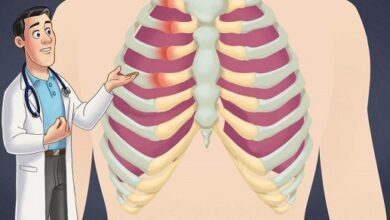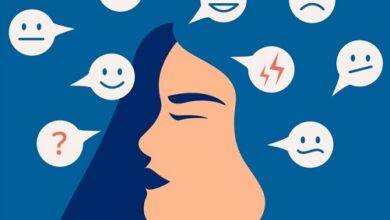Difference between sadness and depression symptoms Treatment
Do you know the difference between deep sadness – or just sadness – and depression? The truth is that a lot of people don’t know and stay sad for a long time, without seeking treatment for what is actually depression. In this article we will provide you the difference between sadness and depression.
In today’s text, you will learn to differentiate a natural emotion – which is very useful in your life – from a psychological disorder, which can cause immense damage. Also, you’ll have access to a test carried out by psychologists to find out if you have symptoms of depression!
What is deep sadness?
Deep sadness is a very intense feeling of loss and pain, which is usually caused by some serious event in your life. So, you just lost someone you love, for example, you ended a relationship that was important to you, you got fired from your job, etc.
Anyway, there are specific situations that generate this feeling of sadness and make perfect sense – because you are experiencing a sad situation! Like all emotions, sadness has a very important role: to help you organize yourself in the face of the experience you just went through.
For example, when you feel sad because you lost someone important, you turn inward and get closer to your family and other people who are important to you – that is, you adapt to this new reality; when you are sad because a love relationship ended, you stop and rethink what went wrong, investigate, within yourself, what you can do differently and, many times, you are open to change.
So, sadness is an emotion that nobody likes to feel, but that has a very real value. That’s because it organizes and prepares you to deal with a true-to-life situation!
What is depression and what are the symptoms?
Depression is caused by a number of factors:
causes of depression
The first of these is a certain family predisposition – from your genetics – to become depressed. That is, some people get depressed more easily than others.
Another factor that helps to cause depression is an unsustainable lifestyle : with a lot of stress, with deregulated sleep, without physical exercise, with messed up eating and with a lot of pressure on you.
The third factor, which often triggers depression along with the other three, can be the same as deep sadness: something that has happened in your life lately, which has thrown you off track.
And here it applies: an important loss of a relationship for you, the loss of a job or being unemployed for a long time, being subjected to a great deal of stress for a long period, etc.
symptoms of depression
For you to be able to identify the difference between sadness and depression, you need to pay attention to the symptoms of depression.
However, it is important for you to understand one thing: they have to be present in your life, or that of the person who is worrying you, in the last two weeks. Therefore, it is no use for you to base yourself only on today, yesterday or the last few days.
Some of the main symptoms are:
- Depressed mood most of the day;
- Loss of interest or pleasure in activities that previously brought pleasure;
- Sudden significant weight loss or gain;
- Significant decrease or increase in appetite;
- Insomnia or hypersomnia regularly;
- Fatigue or loss of energy nearly every day
- Feelings of worthlessness or excessive guilt;
- Decreased ability to think or concentrate.
Deep sadness comes on and makes you sick and a little dull for a few days, but then it passes. During a depression, however, this state of sadness seems to be present for a long time, in addition to being accompanied by these other symptoms that we have just presented.
Differences between sadness and depression
Do you feel very sad or depressed? Although sadness is part of depression, it is necessary that we learn to differentiate the two terms, as there are different ways to treat each of the situations. A person who is very sad often says they are depressed, but this may be a temporary emotional state caused by a specific reason.
The difference between sadness and depression is basically the following:
- Sadness is a transient state of mind that appears when we think about any situation that causes us pain and can be caused by rejection, feeling disappointed, losing a loved one, illness, etc.
- Depression is a psychological disorder in which the person experiences deep and lasting pathological sadness, becoming unable to feel pleasure or even perform their daily activities. Among the symptoms of depression are lack of energy, difficulty concentrating, sleep disturbances, feelings of emptiness and hopelessness, among other sensations that generate great discomfort.
- Sadness is a transitory state of humor, which appears due to some difficult or painful situation.
- Depression can appear without justification, due to the lack of production of some neurotransmitters in the brain.
- We all experience in life an emotion as common and normal as sadness.
- Not all people will experience depression during their lifetime.
- Depression requires treatment.
- Sadness does not require treatment.
Since we know the difference between sadness and depression, it is important to talk about treating the disorder.
People suffering from depression should see a therapist, and the most appropriate treatment for depression is psychotherapy, especially Cognitive Behavioral Therapy .
The aim of this therapy is to alleviate and reduce the symptoms associated with depression, so that the person can gradually return to their daily activities and increase their emotional well-being.
In this type of therapy, all those irrational and negative thoughts that affect the way we feel are worked on.
This happens through cognitive restructuring, where harmful thoughts are modified to more objective and positive ones.
Activation exercises are also worked on, in which the proposal is to perform some physical activities with which the patient most identifies.
How to know if the person has depression or if it’s just sadness?
To know this, it’s worth paying attention to how this cycle is working. Usually, when it comes to sadness, people withdraw a little, but soon they seek support from those around them.
In this way, they somehow try to compensate for what happened (and this emotion passes over the course of a few days – or at least decreases in intensity)
On the other hand, if you are dealing with depression, the tendency is that this state will not go away on its own. Therefore, you will need to seek treatment and somehow reconnect your life, get it moving and change your habits, in order to get out of depression.
Treatments to relieve symptoms
The truth is that, both in sadness and depression, the feeling is very uncomfortable. In this sense, the main tip on how to alleviate sadness is: do exactly what it tells you to do – stop for a while and look at your life.
how to relieve sadness
So reconnect and spend quality time with your friends and family – the people who matter to you. Also, take a moment, look at your life and ask yourself if it is going the way you want it to go.
If not, are there things you should change? Are there criticisms that you receive frequently that could be behind these events that made you sad? That is, use the emotion of sadness to stop and look at your life and, from there, think about what you want to change.
In this way, understand sadness as a kind of shock in your life, so that you can stop and organize what is happening to you. In that movement, try to engage in things that are important to you, like exercising and changing your habits!
How to treat depression
Already in depression, the same tips will also be worth it. However, they are a little bit different. For you to alleviate your depression it is important that you restructure your life habits! So, here goes:
1. Exercise
Even if it’s just walking in the hallways at home, jumping, getting up and sitting on a chair, climbing the stairs or even doing something more adventurous! Also, if you are in a more energetic mood, dancing and other recreational activities also help a lot.
2. Regulate sleep
Also, it’s important to look at your sleep and see if you’re sleeping the hours you need. Are you sleeping and waking up at the same time every day? Because adequate sleep – sleeping the necessary hours, with quality – guarantees, for you, all the energy you will need to get through the day!
3. Have an adequate diet
Also, it’s worth looking at your food, in order to analyze whether you are consuming all the necessary nutrients – in the necessary amount -, so that your body works, like a clock.
4. Treat physical ailments
An important tip, in cases of depression, is to ensure that you are treating any physical ailments you may have. So get a doctor for a checkup.
Often, physical illnesses bring symptoms similar to depression. In these cases, it is no use for us to treat the psychological without treating the physical as well. Because your depression is not just something that happens in your head, but it’s something that happens in your body as well.




